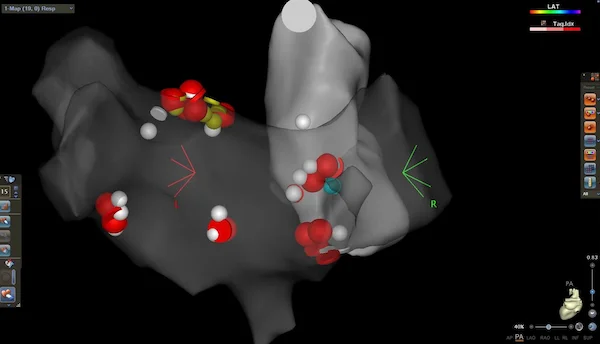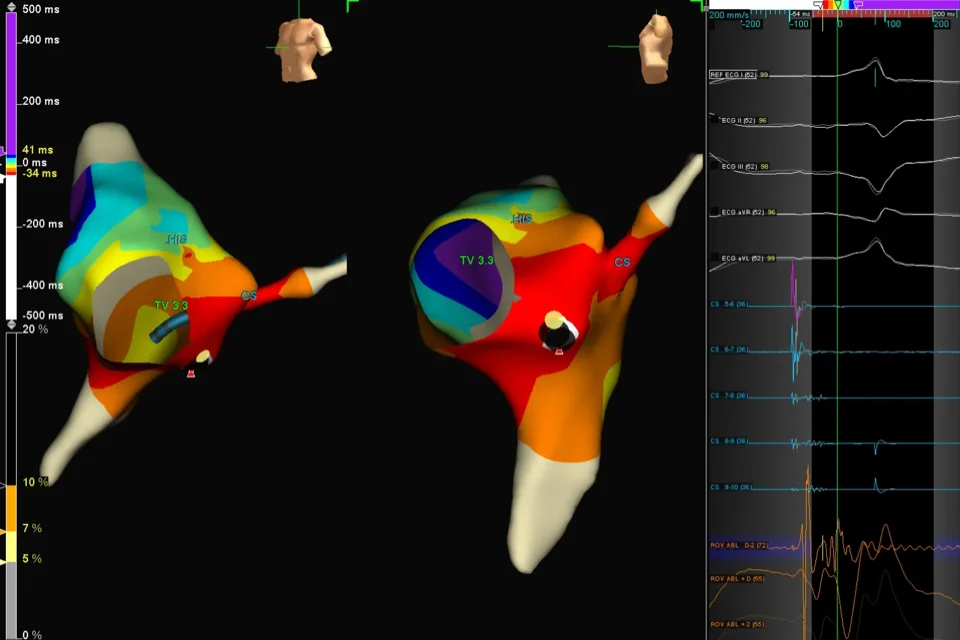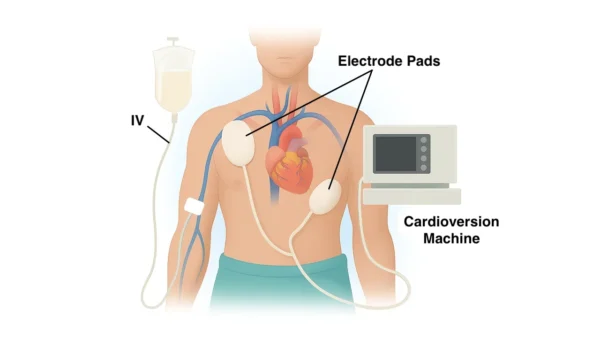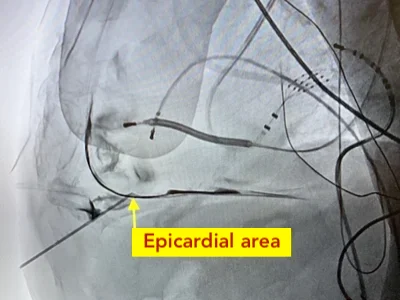What is Cardioneuroablation?
Cardioneuroablation is a new ablation technique that offers a promising approach in the treatment of vasovagal syncope and functional bradycardia. This method aims to reduce the excessive effect of the parasympathetic nervous system on the heart by targeting autonomic ganglia around the heart. It is also called CNA.
How is Cardioneuroablation Performed?
Cardioneuroablation is performed under local anesthesia using 3D mapping systems. After identifying the ganglionic plexuses, ablation is performed with radiofrequency energy and takes approximately 1-2 hours. It is particularly preferred in young patients who do not respond to drug therapy, have recurrent vasovagal syncope attacks, have functional bradycardia, and are not desired to have a pacemaker implanted.
Treatment of Vasovagal Syncope with Ablation
In the treatment of vasovagal syncope, the aim is to prevent sudden drops in heart rate and blood pressure caused by excessive activity of the vagal nervous system. There are regions where nerve networks (ganglionated plexi or GP) gather outside the right and left atria. The vagal response is reduced through ablation of the parasympathetic nerves, which are dominant in these nerve networks and slow down our heart. This leads to a reduction in cardiac pauses and slowdowns, achieving effective results particularly in patients with drug-resistant and recurrent fainting episodes. This method may eliminate the need for pacemaker implantation in some patients and provides significant improvement in patients’ quality of life.
However, not every vasovagal syncope patient is suitable for this ablation. For the treatment to be successful, low pulse rate during fainting should be the primary concern. If fainting occurs solely due to low blood pressure, the patient is less likely to benefit from ablation.
Functional Bradycardia Ablation
In bradycardia treatment, the goal is to increase heart rate by suppressing vagal tone in cases where heart rate is slower than normal. This method, which is particularly effective in patients with sinus node dysfunction, can prevent the need for pacemakers in young patients. Additionally, successful results can be obtained in selected cases with AV conduction disorders.
What are the Advantages and Disadvantages of Cardioneuroablation?
The most important advantages of this minimally invasive procedure are that it doesn’t require a permanent device, provides rapid recovery, and allows quick return to daily activities. However, a significant disadvantage is that it may not be suitable for every patient. It should be considered that the procedure needs to be performed in experienced centers, requires regular follow-up, and may need to be repeated in some patients.
Conclusion
While cardioneuroablation is seen as an alternative to pacemaker implantation, especially in young patients, patient selection is of great importance. The treatment decision should be made specifically for the patient after a detailed evaluation, and a long-term follow-up plan should be established.






